Recreation & Lifestyle
Welcome to Recreation & Lifestyle, which includes leisure riding and other aspects of the equestrian lifestyle for you and your horse loving friends and family.
Looking for the perfect present? See the Gifts & Jewelry section. Redecorating? Find a Painting, Photograph or Sculpture in the Artwork section. Need to check out a movie or crawl up with a good book or magazine? See our Entertainment section where you will find and Books, Movies, Games, and Magazines. And don't forget about Fine Art in some specialty Museums that might surprise you.
Looking for love or a trail buddy? Riding Partners is the spot to seek other riders who share your passion. Find a place to ride with that special person in our Trail Riding section and if you need more time away, take a look at Vacations. Want to know about the next horse show or special event? Don’t miss it! Dates and locations are included in the Calendar of Events for Recreation & Lifestyle.
Do we need to add more? Please use the useful feedback link and let us know!
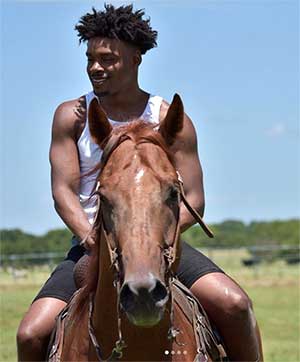
By Bob Velin
In the early-morning hours of October 10, 2019, the life of Errol Spence Jr., one of the boxing’s brightest pay-per-view stars and undefeated boxing champion changed in a flash.
Driving his $300,000 Ferrari 488 Spider at frighteningly high speeds on the streets of downtown Dallas, Texas, where he resided – he'd been drinking and wasn't wearing his seatbelt -- Spence, then 29, lost control of his car when he hit a median and was ejected through the windshield as the Ferrari cartwheeled multiple times and was totally destroyed. The entire crash was caught on tape by a nearby security camera.
Miraculously, Spence, nicknamed “The Truth,” not only survived but suffered no broken bones and only some facial cuts and the loss of a couple teeth. Just a few weeks removed from successfully defending his welterweight titles, the boxer quickly realized he had cheated death and lived to talk about it.
“I don’t know how or why I got saved, but thank God,” he later wrote on Instagram. “The thought of leaving my (three) little girls and them growing up without me still (messes) with me, but I’m triple blessed and must be here for a reason . . . My accident slowed me down and gave me a different perspective on (things) I was taking for granted.”
Armed with a new lease on life, Spence found that new perspective in a nearly 60-acre ranch he purchased in DeSoto, Texas, just south of Dallas.
“I was just trying to find answers, you know? I needed to go somewhere new and start over and get out of that dark cloud that was downtown,” he said in a recent interview, “and be in a better element, because I’m already like an introvert; I don’t like being around people that much anyway.
Read more: Champion Boxer Finds Peace and a Second Chance with Horses
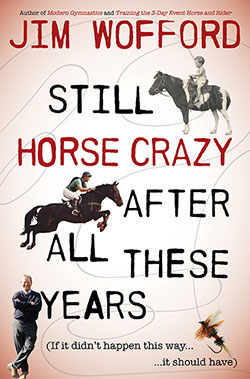
By Jim Wofford
My magical 1962 summer started as soon as I landed in Ireland. Imagine getting in a taxi at the old Dublin Airport and immediately falling into a serious debate with the driver as to whether Arkle or Mill House was the greatest steeplechaser that Ireland had ever produced, or “was dere a better in all tha Emerald Isle?” By the time I got to my destination, I had a lead on two of the “greatest young leppers” the world had ever seen, a tip on the 4:30 race at Punchestown Racecourse, and an invitation to an IRA fundraiser that evening at The Grasshopper, in the village of Clonee.
It was a wet summer, even for Ireland. The sun was out the morning I landed in Dublin and shone again the day I left—and it rained every day in between. When I mentioned this, I was told, “Yes, but it’s a dry rain.” The Irish have a subtle conception of the truth.
Despite the weather, I rode young sales horses every day for the next few weeks. The Captain had a steady stream of clients, and John and I presented likely prospects to them. Whatever technique and polish I had gained at Culver was going to have to suffice; at that time, the Irish were long on horse sense, but short on technique. It took a fair amount of “git ‘er done” to ride uneducated young stock over colored poles and up and down the few banks and ditches we had on the place.
I was on a strawberry roan mare one morning and had gotten the bucks out of her by the time The Captain drove up. I showed him her new tricks by circling a few times, riding a couple of figure eights, and changing back and forth from trot to canter. The Captain seemed happy enough with the progress of her flatwork and told me to pop her over the bank at the end of the field. “Okay,” I said. “Has she been over it before?” “Ah, no,” was the reply, “but her dam was a great lepper.” I wouldn’t say this one was great, but she had a good attitude, and we eventually scrambled back and forth successfully. I learned a lot about horses that summer, including what happened when horses from a good gene pool crossed paths with enthusiastic ignorance. Horses have an extraordinary desire to please humans; they will put up with our most outlandish requests, if asked in a determined and confident manner. This was the first time I noticed this about horses, but it wouldn’t be the last.
Read more: Irish Summer - An Excerpt from Still Horse Crazy After All These Years
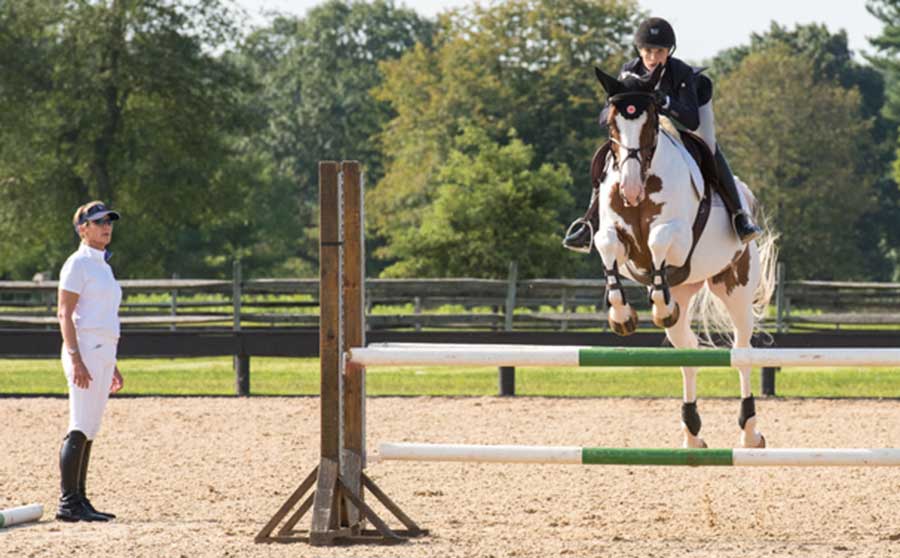
By: Sarah Hickner
Foreword By Natalie Mayrath
Even before Simone Biles pulled out of the Olympic Gymnastics Team Event in Tokyo, the reporter originally responsible for blowing open the Larry Nassar scandal published a headline that said: USA Gymnastics May Never Recover From Larry Nassar.
The New York Times reported that USA Gymnastics is “still struggling to recover.” That’s the understatement of the century!
As compounding allegations unraveled the USA Gymnastics image of pure dynasty, it became clear that a systemic failure to consider claims or alert authorities about repeated allegations of abuse had been, as one abused gymnast put it, rotting the organization from the inside. The initial Indianapolis Star report that opened the floodgates described an internal policy that “enabled predators to abuse gymnasts long after USA Gymnastics had received warnings.”
The warnings went unheeded. If you can stomach watching Nassar’s victims making their statements at his sentencing, you’ll hear each woman, one by one, repeat eerily similar stories, and you’ll notice the devastatingly common theme: The adults -- who ran the organizations which many of these girls devoted their lives to -- refused repeatedly to listen. It is crushing hearing many of them say they were silenced, dismissed, even belittled.
Molding top athletes for competition was the biggest priority. And so the vibrance of The Gold Medal Machine took precedence over the well-being of the children who served it, for decades.
Similarly, Anne Kursinski grew up riding in an equestrian dynasty environment at Flintridge. It was a who’s who of top riders, top horses, and the related social scene. There, she was bred to be a champion, which she absolutely is. But if you wanted to reach the elite level, you had to submit to the God-like trainer. And so it goes, for decades, the abuse was rampant. And Anne is also a horsewoman, a mentor, a survivor.
Read more: Decorated Olympian Shared Abuse Story to Save the Children
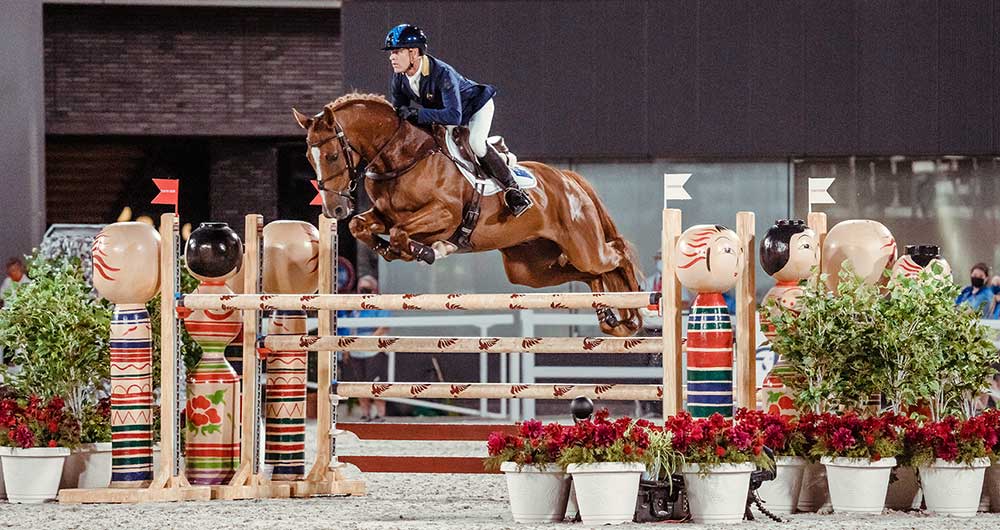
Gold Medal History Twice, Unsurprising Lone Dressage Score Finisher, Favorites Slip, Impact of Format & Frangibles, as Eventing Competition Concludes
By: Natalie Mayrath
Welcome to Tokyo Takeaways on StreamHorseTV! In this series StreamHorseTV will be talking Tokyo Equestrian with the lovely and knowledgeable Catie Staszak, international Show Jumping commentator, multimedia sports journalist, and CEO of Catie Staszak Media. We will provide discussion, insight and commentary around all the action happening on the ground during the Tokyo Olympic Equestrian Competitions.
We sum up an historic Olympics Eventing competition that saw the best ever team score in history, and the first-ever female gold medalist. While the two-time reigning gold medalist was pitted against the world-ranked number one rider, they both incurred jumping penalties to slip in the standings, dipping below our first female gold medalist, and an eventing legend in his eighth Olympic Games, who unsurprisingly was the only competitor to finish on his dressage score.
Gold Medal History -- Twice
The cross-country phase of three-day eventing usually proves influential, as Phillip Dutton described it. In these Tokyo Olympics, it caused some riders to slip in the standings, but it gave Great Britain their prelude to punching the best score ever recorded in Olympic Eventing history to claim the gold medal.
Australia took the silver in deserved fashion boasting the likes of Andrew Hoy, Kevin McNab, and Shane Rose. France, who won team gold in Rio, settled for bronze here.
Team Great Britain was flawless with three double-clear rounds on cross-country, and they sealed their powerhouse performance by turning in exemplary show jumping rounds, although they were so far ahead that they had many rails to spare. Staszak says, “they still had three rails in hand, it was so, so impressive.”
Also entering the record books is eventing’s first-ever female Olympic Gold medalist.

It's an exciting time for Equestrian events at the Tokyo Olympics. You can find a complete Schedule of Events HERE where you can Live Stream or see replays. Don't miss a thing!
In 1964 women were first allowed in this stadium in Tokyo. Now for the first time in history, a woman won Individual Eventing. Julia Krajewski for Germany wins the Gold medal and makes history as the first female winner in the Olympics in Individual Eventing!
You can find results in the Equestrian Medals Standings HERE.
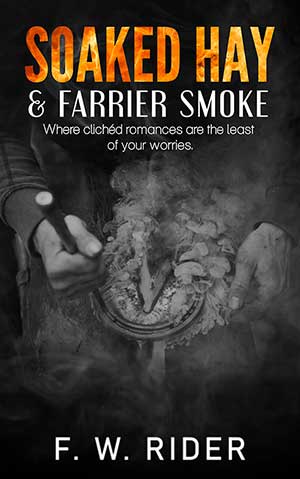
R.W. Rider
The weather has well and truly turned. To say it’s shitty is an understatement. In spite of what felt like a pretty mild Christmas, January has arrived and wow, has it let us know it’s here. But whatever the weather, I still venture out daily and today has been no exception. I’ve been up since about 5 a.m. and am officially knackered. A rather looming deadline, one I’ve left until the very last minute – well done, me – meant waking at the crack of dawn like some nocturnal creature and hitting the keys on my Mac for a few hours.
To be fair, while I seriously loathe that immediate feeling of sheer exhaustion when your alarm goes off, getting up early and smashing out a whole chunk of work before the sun even rises is my favourite way to start the day. Not because I’m dedicated… well I guess I am a little, but mainly because it means I can drop the laptop back on the bed and head to my favourite place in the middle of the day – the yard.
Is it bad that I’ve always loved my own company? I don’t think so, though I could do without the pitying stares that constantly come my way. I love my friends, I do. I love my family, or what family I have – just me and mum – but I also love my own company. Well, my company when I’m with my man. That man just so happens to weigh about three quarters of a tonne, have four mighty striking legs and the cutest little whiskers. That man is my warmblood Lincoln.
Today my diary is marked for the farrier visit. Yet another one of Lincoln’s regular spa days as I call them. Every seven weeks on the dot, this guy gets four new shoes and I get a slightly lighter wallet. Thankfully, the sting’s taken out of handing over almost £100 every seven weeks by the sheer fact that I’m secretly in love with the man who takes it. Before you say it… how cliché. Yes, yes, who’d have thought it? A horsey girl in love with the farrier, but Jesus man, the guy’s a god.
I’ve known Eddie for years, even before Lincoln came along. I knew him as the guy who used to shoe my old loan pony before I could actually afford my own horse. It’s funny because I actually began using a different farrier when I got Lincoln, who as it turns out preferred ‘shoeing’ of a different kind. He gave some random guy a good seeing to after a night on the sauce and got sent down for GBH.
I needed a farrier to step in at the last minute before a show and who should volunteer in all his man-mountain glory but Eddie? I’d always admired him from afar. He’s a rugged kind of handsome, with a dark curly mop on top of his head and stubble to match. He also happens to be thirty - three, a little older than me, but that doesn’t stop the continual spark between us. I’ve never had any intention of taking it further though – just the thought of being another notch on a farrier’s rasp turns my stomach.
- Mountain Tour, an Excerpt from Embrace of the Wild by Linda Ballou
- The TOP 10 Mistakes People Make when Buying a Pleasure Horse
- Marion County Public Schools new reading program, students learn about equine industry
- Excerpt from "A Filly Called Easter"
- How To Stay Motivated During the Winter
- A Burning Question In The 1890s – Shall Women Ride Astride?
- Horses: Portraits & Stories by Shelley Paulson
- Deborah Kalas, The Wild Herd Excerpt
- An Excerpt from "Red Rock Ranch: Lucy's Chance" by Brittney Joy
- Excerpt from "Racing Time, A Memoir of Love, Loss and Liberation"








